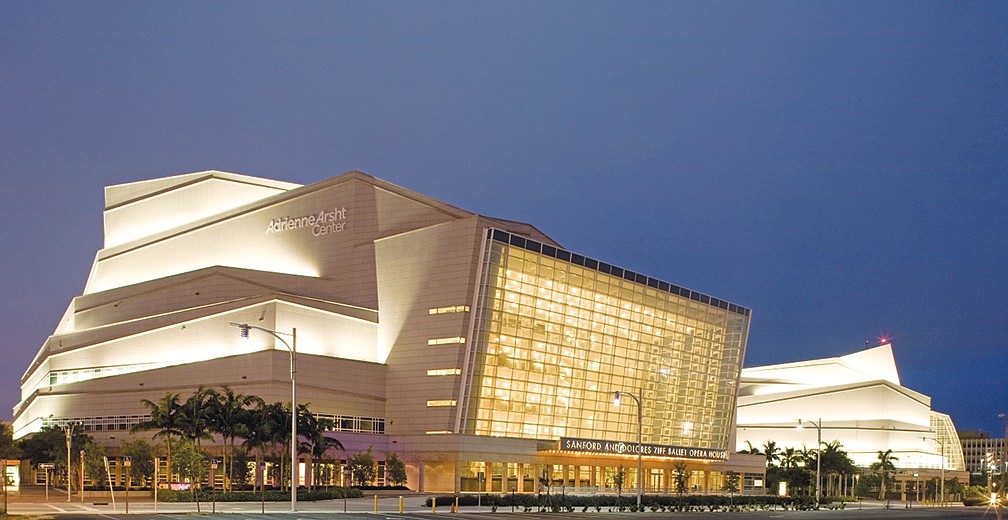- April 26, 2024
-
-
Loading

Loading

These are good signs and cause for optimism for Sarasota — and the region.
Four important cultural institutions — Van Wezel Foundation, Sarasota Orchestra, Sarasota Ballet and Mote Marine Laboratory, along with the fledgling Bayfront 20:20 group, are addressing their long-term future. Specifically, their space needs to continue to thrive and be a place where they, physically, can fulfill their visions and ambitions.
What an exciting time, especially for a city that so often finds it difficult to let go of its small-town self-image and pursue what could be. Add to these organizations’ aspirations, the fact Sarasota’s downtown is teeming with signs of growth. Sarasota is moving forward. And the pace is picking up.
Don’t stop.
Think big. Be bold. Strive to be — borrowing a phrase from Jim Collins’ “Good to Great” — the Best in the World.
At the same time, amid all of the enthusiasm and momentum pushing these institutions to determine their destinies, there are three “P” words that would make good companions for each of the organizations’ ambitions: perspective … patience … persistence.
Everyone would like to know now, of course, what the outcomes are going to be for each of these institutions. What and where the Sarasota Orchestra, Sarasota Ballet, Mote Marine and Van Wezel Performing Arts Center will call home. But if you study the experience of Sarasota 52 years ago when city fathers rallied residents to bring the Van Wezel Performing Arts Center to life, or the more recent experiences of cities around Florida and across the country to create landmark performance halls, they all shared common elements.
Miami’s Arsht Center consisted of a $153 million private capital campaign, plus tax revenues taken from Miami-Dade’s convention development tax revenues and increment
tax revenues from a Miami redevelopment district.
In Kansas City, the City Council kicked in $47 million for a parking garage, using tax revenues from a river casino to pay off the debt. The state of Missouri gave $25 million in income-tax credits to donors over two years.
The Dr. Phillips Arts Center benefited from a commitment in 2007 of funding from Orange County and the city of Orlando — much of it, like Miami, coming from tourist tax revenues. Public financing is estimated at about $310 million.
But for each of these three facilities, funding also came from a variety of foundations and corporate support — the latter being a vein that runs far deeper than that in Sarasota.
In Orlando, the Dr. Phillips Charities contributed $35 million; Walt Disney Co., $12.5 million; Orlando Magic, $10 million. Miami’s foundation and corporate donors included the Arison Arts Foundation (Carnival Cruise Lines); Dade Community Foundation; Doris Duke Charitable Foundation; Rockefeller Foundation; The Andy Warhol Foundation for the Visual Arts; John S. and James L. Knight Foundation (Knight-Ridder newspapers); American Express; and Exxon Mobil Inter-America Inc. The center’s namesake, Adrienne Arsht, contributed $30 million.
Miami’s Arsht Center is just north of the city’s towering offices and condominiums on Biscayne Boulevard, three blocks from the waterfront. Orlando’s Dr. Phillips Center is across the street from the Orlando City Hall. And the Kauffman Center settled on the edge of two popular restaurant and entertainment districts — the Crossroads Arts District and Kansas City Power & Light District.
In Orlando, former Mayor Glenda Hood started a campaign in 1995 to develop a new performing arts center downtown. Six years later, she gave up and handed the project to the University of Central Florida. And that went nowhere. In 2003, Mayor Buddy Dyer took on the project again.
Over a 10-year period, the board for the Kauffman Center started plans for one location, then decided on another, only to return to its original site. After fundraising shortages and redesigns, an August 2005 groundbreaking didn’t occur until October 2006.
Each of the three facilities took two decades to go from concept to opening.
Perspective, patience, perseverance. Add determination and the will to be extraordinary. It’s a legacy-making moment for Sarasota. Make it happen.